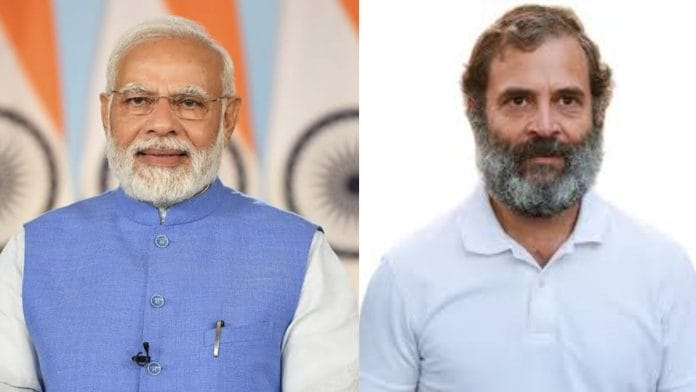Thank you dear subscribers, we are overwhelmed with your response.
Your Turn is a unique section from ThePrint featuring points of view from its subscribers. If you are a subscriber, have a point of view, please send it to us. If not, do subscribe here: https://theprint.in/subscribe/
Having worked in corporate finance, when I hear the word “Guarantee”, I first think of a Bank Guarantee. A bank guarantee is issued by a bank to a beneficiary on behalf of a client. It assures a beneficiary that payment can be demanded from the bank if the client defaults on their obligations towards the beneficiary. The beneficiary derives comfort from this guarantee because a bank is contractually/ legally bound to honour a demand.
How do we extend this logic to the “guarantees” given by our political parties during their election campaigns? What is the enforceability/validity of these guarantees? There is no legal obligation, after all!
Reliability of the promisor (party/ neta) – their intention/ ability to keep their promises is of course important. This is an intangible factor, depending on how serious the party/ neta is. I do not want to get into this. Nor do I want to get into the administrative ability or efficiency of the government machinery to deliver the promise, since it is also an intangible factor. My focus is on the economic “do-ability” of the so-called guarantees -especially Mr. Rahul Gandhi’s election-speech promise (though not in the party manifesto) of “khatakhat-khatakhat Rs 8500 per month or Rs 1 Lakh per year” which has got a lot of publicity and may have got votes.
Economic or fiscal do-ability means that you can meet the guarantee without causing long term harm to the public exchequer. I want to elaborate this. Let us consider the constraints:
- How much does it cost to implement the guarantee?
- Resources / income of the Govt. -possibility of increasing resources
- Is there a budgetary space available for the guarantee – can it be easily accommodated without major disturbance to existing spends, or will something else have to be sacrificed?
Rs 1 lakh per year is a huge sum when you start multiplying by the no. of households. Assuming you target the bottom 20% of 140 crore Indians, you need to cover at least 28 crore Indians or 5 crore households. If you calculate with 5 crore households, it works out to Rs 500,000 Crores = Rs 5,000 Billion = Rs 5 Trillion. Besides, once you introduce such a scheme, you (or the competing party) will be tempted to increase the amount periodically or even increase the coverage to more households.
What does this huge amount represent? For comparison, our annual Defence expenditure (Revised Estimates 2023-24) was Rs 455,897 crores. Govt. of India’s subsidy bill (Fertilisers, Food, Petroleum) was Rs 413,446 crores.
Where is this money going to be found? The total revenue receipts of Govt. of India (Revised Estimates 2023-24) were Rs 26,32,281 crores. What is the feasibility of increasing these revenues inorganically? Not much, in my humble opinion.
Can you get more revenue by increasing tax rates? Our socialist friends would love this – remember the1970s maximum marginal rate of 97.5% tax? This will restore black money to its former glory, and tax revenues will only dip, not increase.
What then will the Govt. do, to accommodate the khatakhat guarantee? Can they cut something else (very difficult to touch Defence, Interest payments, Education, Health, Farm Subsidies, Salaries/Pensions)? Don’t forget the other Congress guarantees such as MSP increase for farmers etc. which will put a further strain on finances. Capital / Developmental expenditure will definitely be cut.
In all likelihood, they will print money (result will be inflation) or borrow heavily (result will be higher fiscal deficit & higher interest rates, driving up Govt.’s interest liabilities and driving up the cost of capital for businesses). Look at what is happening in Kerala – their expenditure is too high and they keep asking the Centre for more money. We will enter an era of galloping inflation along with prohibitively high interest rates which will deter new investments.
The scariest outcome possible is that the Congress will then take Mr. Rahul Gandhi’s other election speeches seriously and implement his X-ray cum wealth redistribution idea. Wealth redistribution is nothing but poverty redistribution. This would be the most dangerously stupid thing to do, and take India back to the dark ages.
To conclude, the khatakhat guarantee is undoable and ill-advised. Mr Modi should be commended for not competing with this. Whatever else may be his faults, he has exhibited a lot of responsibility in managing the finances of the Govt. of India. But if the khatakhat idea does gain traction, it will be because (to borrow a phrase from Mr. Shekhar Gupta) nothing can stop a bad idea whose time has come.
These pieces are being published as they have been received – they have not been edited/fact-checked by ThePrint.


